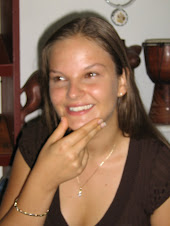The Dominican Republic and political polling
Apart from a survey on attitudes and fears of the Dominican people that sponsored the Central Intelligence Agency in 1962 when the newspaper.
The News retained the services of the Centre for Research and Social Marketing (CIMERS), which was led by Luis Augusto Caminero son, to measure the preferences of voters in the capital city in a process in which disputed presidential Silvestre Antonio Guzman Fernandez, Joaquin Balaguer, Francisco Augusto Lora, Jaime Manuel Fernandez, Pedro Delmonte Urraca and Luis Lajara Homero Burgos.
In mid-1965, the CIA organized another inquiry to find out who Dominicans vote in September of that year. When the Evening News entrusted his CIMERS survey, in 1974, published an editorial in which it stated that offered such service to its readers "for the first time in the Dominican Republic." When asked "Which of the candidates you like the most for the presidency?" People from Santo Domingo responded: 44.01 percent in favor of Guzman; 33.9 percent Balaguer; 8.11 percent by Lora; 0.64 by Jaime Manuel Fernandez; 0.42% by Delmonte Urraca and Lajara Burgos. The abstention would be minimal.
He said that public opinion polls were saying nonsense, trying to subtract validity to the revelation and said that one company offered a survey with results in his favor of 25 thousand pesos. So far, other media firms have hired pollsters on the eve of elections: The National Today, El Siglo, Listín Diario, Journal Now, Rumbo, Ultima Hora, the Caribbean, among others, have had to Violeta Yangüela and Associates, Stanford Klappers Associates, of Puerto Rico; The Gallup Organization, Princeton, New Jersey (El Siglo); Roper Starch Worldwide; Thesis Consultant; Mercadesa, Rafael Acevedo Perez, Penn & Schoen, represented in the country by Bernardo Vega; Sigma-2 Hamilton & Staff ...
Each result triggers joy, frustration, stimulation candidates and voters. In newspapers the directors of polls by the reactions of discontent and disgust of leaders at a disadvantage, as was the case with Juan Bosch and the newspaper TODAY in 1986.
This is the first delivery of a series of works with which Angela Pena continues step by step, the presence of political polls in the country, marked with a start in 1962 when the CIA used students from the rebel UASD to probe the public. Those who carried out the field who never imagined paid.
Tuesday, April 08, 2008
Subscribe to:
Post Comments (Atom)

No comments:
Post a Comment